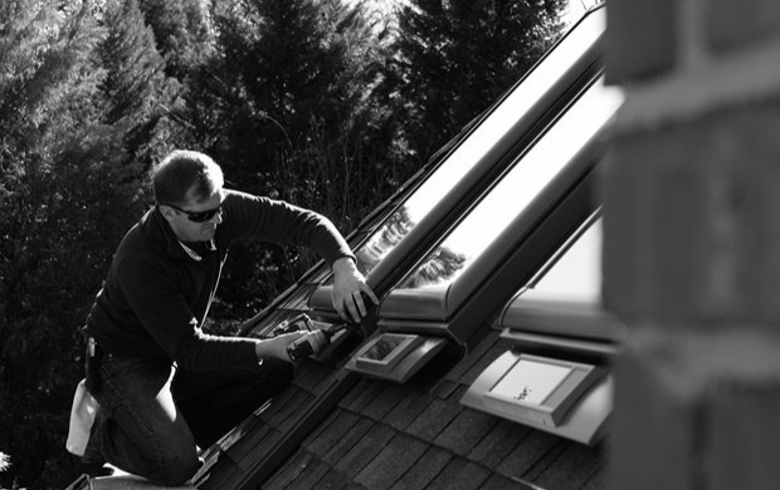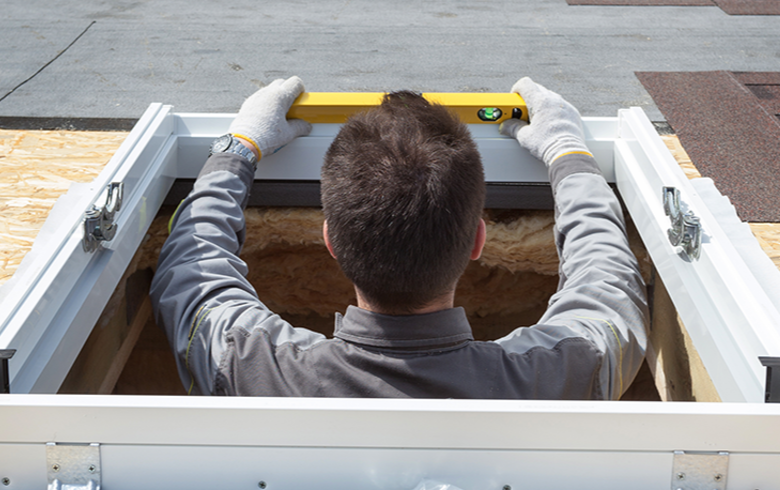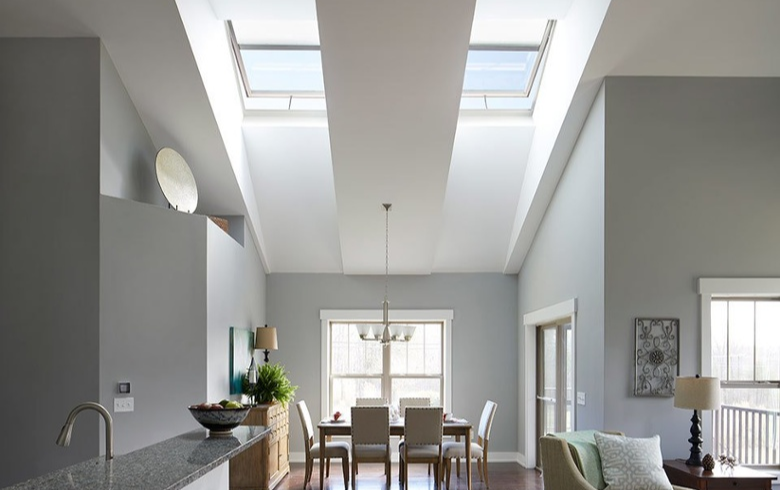At VELUX, we put to excellent use our most abundant natural resource - light from above - by developing, manufacturing, and marketing environmentally friendly products that provide and control daylight and fresh air in buildings.
And as a VELUX installer, you're out there on the front line, putting these healthy, energy saving options in your customers' homes and buildings. As such, it makes sense for you to have an idea of how our skylights and accessories contribute to sustainable living.
So, let's dive in!
Energy Efficiency
There's no denying that the sustainable living movement is on the rise; and building owners, occupants, and code officials are increasingly sensitive to energy use and costs. To this end, VELUX has actually been ahead of the curve, right where we intend to stay.
With more than 90% of our production ENERGY STAR qualified in all US climate zones, you can recommend our products confidently and proudly. But to reduce CO2 emissions and optimize energy performance, it's necessary to consider the building as a whole, not just the sum of its components.
In other words, energy efficiency needs to be incorporated into the very design of the building you're working on. Additionally, naturally available resources, like the sun and wind, should be exploited to the fullest extent.
Windows, for example, can be considered for energy contributors. Placed at strategic locations, windows can allow for solar heat gain and optimum natural ventilation. The combined effect of these two factors can be enhanced by adding roller shutters and awning blinds that provide a flexible building envelope that keep heat in on cold winter nights and out in the summer months.
Manufacturing Sensitivity
At VELUX, we're committed to developing environmentally friendly products and producing them in a responsible manner. To accomplish our goals of energy efficiency and sustainable manufacturing practices, we are continuously working to improve our environmental health and safety. In fact, we're nearly emissions-free in all areas of our processes, including raw materials, production methods, use of technologically advanced equipment, and product design; and all of the materials used in our manufacturing processes are non-hazardous.
We're also big on recycling. We manufacture products that contain
- aluminum extrusions with 95% post-consumer recycled material,
- glass with 60-65% recycled content by weight, and
- packaging that has 53% recycled content and is 100% recyclable.
Additionally, our light-filtering blinds have 15% pre-consumer vinyl content. And post-production, our recycling program sends 100% of aluminum, copper, acrylic, PVC, and Santoprene to be recycled. Moreover, 100% of wood waste is either incorporated back into the product in lesser form or reclaimed for use as animal bedding and palletized fuel.
Indoor Air & Light Quality
VELUX's range of skylights and roof windows provide a whole host of options that allow you to take advantage of daylight and views when the roofline doesn't permit vertical window placement. And for where a skylight won't fit, the VELUX Sun Tunnel Skylight can provide daylight in up to 95% of interior spaces in residential and light commercial buildings.
Skylights installed with light controls, like shades, can improve indoor environmental quality all day long. Additionally, our "Fresh Air" Skylights contribute to greater thermal comfort and ventilation by removing excess heat, moisture, odors, and other VOC indoor pollutants. This can even help reduce the need for air-conditioning throughout the year.
Commercial Buildings
Let's switch gears for a moment because environmentally responsible and sustainable aspects in commercial structures have the potential to be far greater in scope and overall impact than in residential projects.
In commercial buildings and industrial applications, artificial lighting is one of the largest sources of energy consumption. It can account, on average, for 40% of the building's total energy. And, believe it or not, the energy savings achieved from reducing electric lighting dependency far exceeds any heat gain or loss in the vast majority of applications. Meanwhile, skylights typically provide less heat than electric lighting.
Utilizing the high visible light transmittance of VELUX acrylic skylights has been shown to significantly reduce energy costs through the benefits of daylighting. Typically, proper design of a skylit building results in a skylight-to-floor ratio (STF) of between 4-6%. So, with proper design, the cost of skylights can be paid back in less than two years because the high visible light transmittance allows artificial lighting to be turned off on average of 70-80% of the time.
Further Reading
For more information on sustainable buildings, check out these links that are full of background info as well as important facts and figures:





